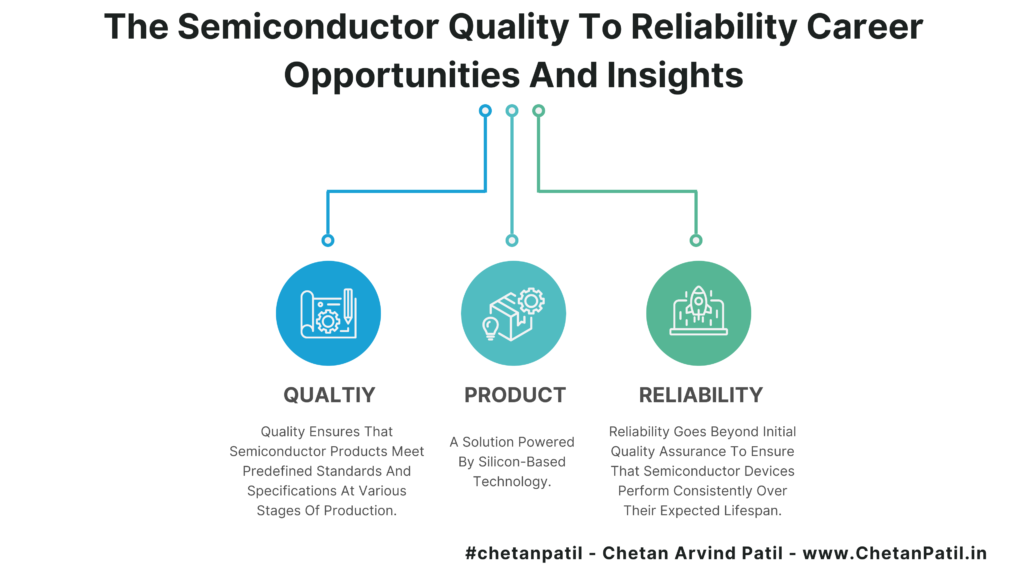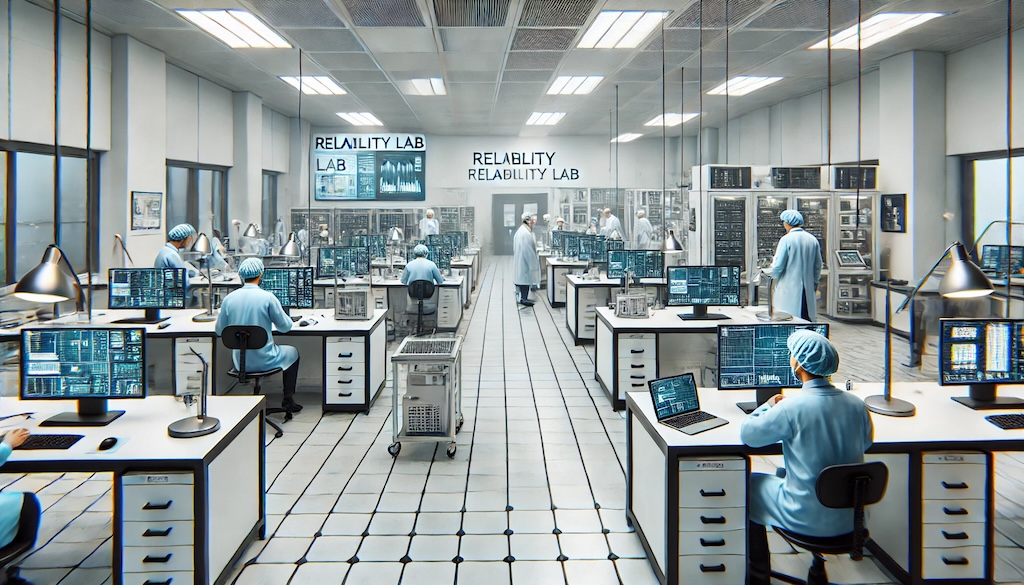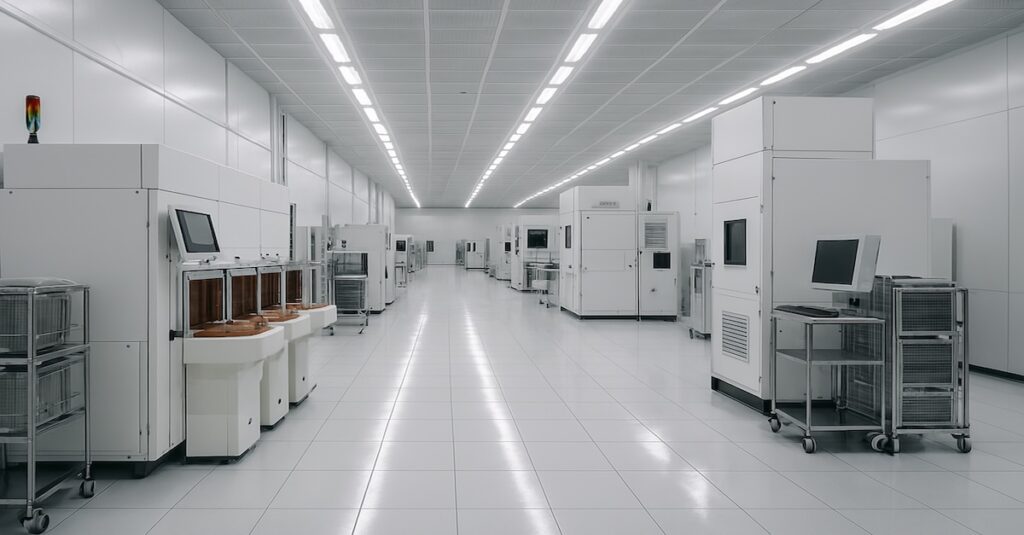Image Generated Using DALL-E
Understanding The Semiconductor Industry Landscape: A Workforce Perspective
The semiconductor industry is dynamic and rapidly evolving, offering a wide array of career opportunities for a skilled workforce. With the global market projected to reach $1 trillion by 2030, the demand for talent is growing, particularly in regions like Asia-Pacific, North America, and Europe.
For students and early career professionals, understanding this landscape means recognizing the importance of specialized education, hands-on experience, and continuous skill development. The industry values technical expertise and prioritizes problem-solving abilities, effective communication, and teamwork. By staying informed about industry trends and investing in their professional growth, aspiring engineers can position themselves for success in this essential and ever-expanding sector.
Among the various workforce roles in the semiconductor industry, quality and reliability engineers stand out as one of the most critical. These professionals are the backbone of the industry, ensuring that semiconductor devices meet stringent quality standards and perform reliably over their intended lifespan.
Quality engineers focus on detecting and eliminating defects during manufacturing, ensuring that each chip adheres to precise specifications. On the other hand, reliability engineers work on predicting and enhancing the long-term performance of these devices, conducting stress tests, and performing in-depth failure analysis.
For students and early career professionals, specializing in quality and reliability engineering offers a robust career path with significant impact, as these roles are integral to the advancement and sustainability of semiconductor technology.
Focus On Quality And Reliability
Quality and reliability engineers ensure that semiconductor products meet strict quality standards during production and perform reliably throughout their intended lifespan. As the complexity and demand for advanced semiconductor devices increase, the expertise of quality and reliability engineers becomes increasingly vital.
Quality: Quality assurance (QA) ensures that semiconductor products meet predefined standards and specifications at various stages of production. It involves rigorous testing and inspection processes to identify and eliminate defects, ensuring that each chip performs as intended before it reaches the customer.
Reliability: Reliability engineering goes beyond initial quality assurance to ensure that semiconductor devices perform consistently over their expected lifespan. It involves understanding and mitigating failure mechanisms, conducting stress tests, and predicting long-term performance under various operating conditions.
Their work underpins the industry’s ability to deliver high-performance, durable products, thereby maintaining customer trust and supporting the continuous innovation that drives the semiconductor market forward. Let us delve deeper into the importance of quality and reliability in semiconductors and explore the career opportunities in these specialized fields.

Responsibilities Of A Quality And A Reliability Engineer
While their ultimate goals align with producing high-quality, dependable devices, their responsibilities and focus areas differ significantly. Understanding these differences is crucial for students and early career professionals specializing in either field.
| Aspect | Quality Engineer | Reliability Engineer |
|---|---|---|
| Primary Focus | Ensuring products meet predefined standards and specifications at various stages of production. | Ensuring products perform reliably over their intended lifespan and under various operating conditions. |
| Standards Compliance | Ensure adherence to industry standards (IEC, JEDEC, AEC etc.) and regulatory requirements to guarantee product quality. | Ensure compliance with reliability standards (IEC, JEDEC, AEC etc.) and perform reliability modeling and simulation. |
| Yield Rate | Focus on maximizing yield rate by minimizing defects and ensuring a high percentage of functional chips. | Not directly involved in yield rate but focus on ensuring long-term reliability of the functional chips produced. |
| Failure Analysis | Not typically involved in detailed failure analysis beyond initial defect detection. | Conduct in-depth failure analysis to understand root causes of device failures and develop corrective actions. |
| Predictive Modeling | Not typically involved in predictive modeling for product performance. | Use predictive modeling to estimate the long-term reliability and service life of semiconductor devices. |
| Customer Feedback | Handle customer returns and feedback to identify quality issues and improve manufacturing processes. | Analyze field data and customer feedback to identify reliability issues and improve product designs. |
| Tools and Techniques | Use tools such as Six Sigma, SPC (Statistical Process Control), and automated testing equipment. | Use tools such as FMEA (Failure Mode and Effects Analysis), reliability software (e.g., ReliaSoft), and statistical modeling. |
| Team Collaboration | Work closely with manufacturing and design teams to implement quality control measures and resolve defects. | Collaborate with design, manufacturing, and quality teams to ensure products meet reliability standards and perform failure analysis. |
How Students Can Gain Skills To Become Quality and Reliability Engineers
Acquiring the skills necessary to become a quality or reliability engineer in the semiconductor industry involves a strategic blend of education, hands-on experience, and continuous learning. Students should start by pursuing relevant electrical engineering, materials science, or computer engineering degrees.
Education Wise:
| Method | Description |
|---|---|
| Pursue Relevant Degrees | Degrees in Electrical Engineering, Materials Science, Computer Engineering, or Mechanical Engineering provide essential knowledge. |
| Specialized Courses | Courses in Semiconductor Device Physics, Quality Management, and Reliability Engineering enhance specific skills. |
Specialized courses in semiconductor device physics, quality management, and reliability engineering will provide a deeper understanding of the principles and practices in these areas.
Skill Wise:
| Method | Description |
|---|---|
| Proficiency with Tools and Software | Learn to use quality tools (Six Sigma, SPC), reliability tools (FMEA, ReliaSoft), and design software (CAD). |
| Data Analysis | Develop skills in statistical analysis and predictive modeling for semiconductor performance and reliability. |
Practical experience gained through internships and co-op programs with semiconductor companies is invaluable, as it offers hands-on exposure to manufacturing processes, quality control, and reliability testing. Participating in university research projects or collaborating on interdisciplinary projects can enhance practical knowledge and problem-solving abilities.
Takeaway
A multifaceted approach to skill development is essential for students aspiring to become quality or reliability engineers in the semiconductor industry. Pursuing relevant educational pathways, gaining hands-on experience through internships, and participating in research projects lay the groundwork for technical proficiency. Acquiring certifications and continuously learning through workshops and online courses will keep you abreast of industry advancements.
Finally, developing solid and soft skills such as communication, teamwork, and analytical thinking will enable you to effectively contribute to interdisciplinary teams and solve complex challenges. By strategically combining these elements, you can build a robust foundation for a successful career in ensuring the quality and reliability of semiconductor devices.






